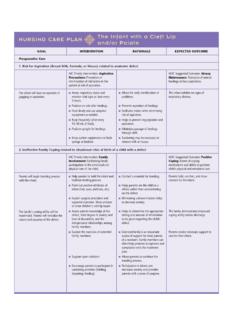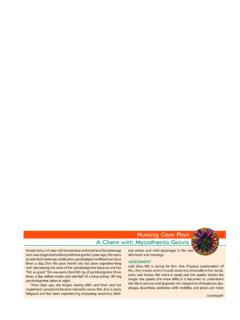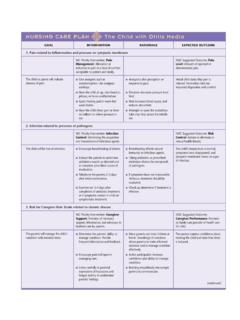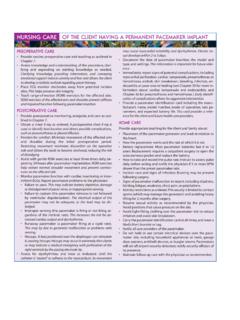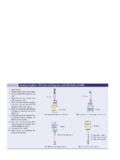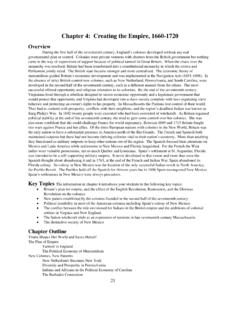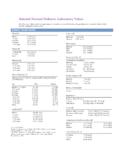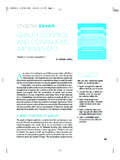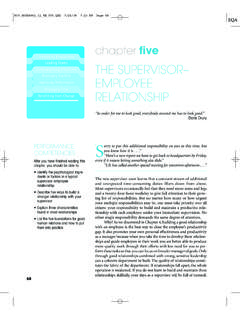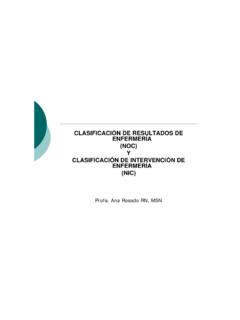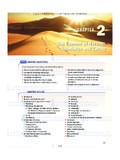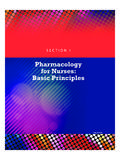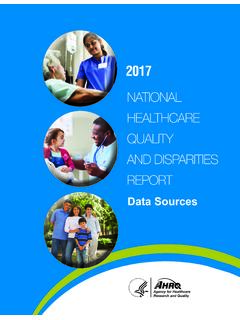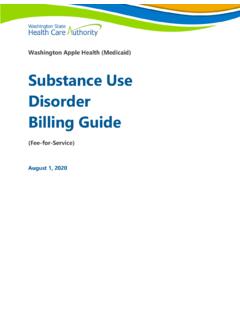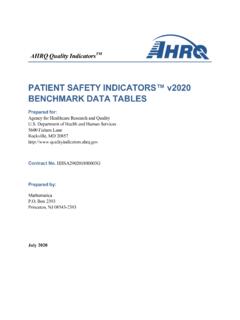Transcription of Nursing Care Plan Mosby.Reprinted by permission. North ...
1 686 UNIT VI / Responses to Altered Bowel Eliminationcolostomy may be necessary. Furthermore, episodes of acutediverticulitis are often recurrent, and the client may fear futureproblems. Assess and document level of anxiety or panicstates can interfere with the ability to respond to instructionsand assist with care. Low to moderate anxiety levels enhancelearning and compliance with prescribed interventions. Demonstrate empathy and awareness of the perceived threatto health. It is important to recognize and respect the client sfeelings and perceptions as reality. Attend to physical care provides reassurance thatthese needs will be met and relieves concerns about them. Spend as much time as possible with the a caring nurse helps relieve fears of abandonment orthat help will not be available if needed.
2 It also enhancestrust and provides opportunity for expression of fears orconcerns. Assess level of understanding about disease and allows misperceptions that may contribute to anxiety tobe corrected. Encourage supportive family and friends to remain withthe client as much as provides a supportiveenvironment for the client and also distracts from physicalconcerns. Assist the client to identify and use appropriate copingmechanisms. Coping mechanisms provide immediate reliefof anxiety while the client adapts to the situation. Involve the client and family (as appropriate) in care increases the client s sense of control over NANDA, NIC, and NOCC hart 24 7 shows links between NANDA Nursing diagnoses,NIC (McCloskey & Bulechek, 2000), and NOC (Johnson et al.)
3 ,2000) when caring for the client with 24 7 NANDA, NIC, AND NOC LINKAGESThe Client with Diverticulitis Nursing DiagnosesNURSING DIAGNOSESNURSING INTERVENTIONSNURSING OUTCOMESC onstipation Nutrition Management Symptom ControlDiarrhea Bowel Management Bowel Elimination Diarrhea Management Symptom SeverityDeficient Knowledge Teaching: Prescribed Diet Knowledge: DietPain Pain Management Comfort LevelRisk for Deficient Fluid Volume Fluid Management_ Fluid BalanceNote: Data from Nursing Outcomes Classification (NOC) by M. Johnson & M. Maas (Eds.), 1997, St. Louis: Mosby; Nursing Diagnoses: Definitions & Classification 2001 2002byNorth american Nursing diagnosis association , 2001, Philadelphia: NANDA; Nursing Interventions Classification (NIC) by McCloskey & G. M. Bulechek (Eds.
4 , 2000, St. Louis:Mosby. Reprinted by Ukoha is a 45-year-old marriedschool teacher who has two children. For thepast 2 days, she has experienced intermittent abdominal painand bloating. The pain increased in severity over the past 9 to 10hours, and she developed nausea, lower back pain, and discom-fort radiating into the perineal region. Mrs. Ukoha reports havinghad no bowel movement for the past 2 days. The emergency de-partment nurse, Jasmine Sarino, RN, completes her admission Ukoha relates a 10-year history of chronic irritable bowelsymptoms, including alternating constipation and diarrhea andintermittent abdominal cramping. She states that she thoughtthese symptoms were due to the stress of teaching middle school,and that they never became severe enough to seek medical ad-vice.
5 When questioned about her diet, she calls it a typicalAmerican high-fat, fast-food diet, usually consisting of a sweet rolland coffee for breakfast, a hamburger or sandwich and soft drinkfor lunch, and a balanced dinner, usually including meat, a veg-etable or salad, and potatoes or pasta, except on pizza night! Physical assessment findings include T 101 F ( C), P 92,R 24, and BP 118/70. Abdomen is slightly distended and tender tolight palpation. Bowel sounds are diminished. Diagnostic tests in-clude the following abnormal results: WBC 19,900/mm3(normal3500 to 11,000/mm3) with increased immature and mature neu-trophils on differential; hemoglobin g/dL (normal to ); hematocrit, (normal 40% to 52%). Abdominal X-rayfilms show slight to moderate distention of the large and smallbowel with suggestion of possible early ileus.
6 A small amount offree air is noted in the peritoneal diagnosis of probable diverticulitis with diverticular rup-ture is made, and Mrs. Ukoha is admitted to the medical unit for in-travenous fluids, antibiotic therapy, and bowel Care PlanA Client with DiverticulitisCHAPTER 24 / Nursing Care of Clients with Bowel Disorders687 ANORECTAL DISORDERSA norectal lesions include hemorrhoids, a normal condition com-mon to all adults that may become enlarged and painful; anal fis-sure; anorectal fistulas; anorectal abscess; and pilonidal incontinence also may be considered an anorectal CLIENT WITH HEMORRHOIDSThe anus and anal canal contain two superficial venousplexuses with the hemorrhoidal veins. When pressure on theseveins is increased or venous return impeded, they can developvarices,or varicosities, thus becoming weak and condition is commonly known as hemorrhoids,or asymptomatic, hemorrhoids are considered to be a nor-mal condition found in all develop when venous return from the anal canalis impaired.
7 Straining to defecate in the sitting or squattingposition increases venous pressure and is the most commonDIAGNOSISThe nurses caring for Mrs. Ukoha identify the following Nursing di-agnoses Painrelated to inflamed bowel and possible peritonitis Risk for deficient fluid volumerelated to inflammation Impaired tissue integrity: Gastrointestinalrelated to perforateddiverticulum Deficient knowledgerelated to disease process and dietarymanagementEXPECTED OUTCOMESThe expected outcomes for the plan of care specify that will: Verbalize adequate pain relief. Experience no adverse effects of prescribed bed rest. Maintain adequate fluid balance while hospitalized, as demon-strated by balanced intake and output, stable weight, good skinturgor and mucous membrane moisture, and laboratory valueswithin the normal range.
8 Heal adequately without further evidence of peritonitis. Verbalize understanding of the recommended high-fiber dietand the need to increase physical activity and fluid intake topromote optimal bowel function at AND IMPLEMENTATIONThe nurses plan and implement the following Nursing interven-tions for Mrs. Ukoha. Assess comfort status frequently, providing analgesics asneeded. Maintain intravenous infusion as prescribed. Measure intake and output; weigh daily. Provide mouth care every 2 to 4 hours until oral intake resumes,then every 4 hours until client assumes self-care. Measure temperature every 4 hours. Advance diet from clear liquids to low-residue diet when allowed. Provide instruction and dietary consultation for high-fiber discharge, Mrs.
9 Ukoha is afebrile, and her abdomen is flat andonly slightly tender to palpation. She is taking food and fluids welland has resumed a normal pattern of bowel elimination. She willcontinue oral antibiotic therapy for another 2 weeks at verbalizes an understanding of the need to continue her low-residue diet for the next week, and maintain a high-fiber dietthereafter. She says she is glad her problem turned out to be di-verticulosis instead of cancer as she had feared, and states that shecan deal with this now that she knows Thinking in the Nursing Process1. Why was Mrs. Ukoha hospitalized immediately and placed onintravenous fluids and antibiotics?2. Mrs. Ukoha reports, I had a small bowel movement of this normal, or is something wrong? What would be yourresponse?
10 3. How did Mrs. Ukoha s previous diet contribute to her divertic-ular disease and diverticulitis? Did the symptoms of irritablebowel syndrome also contribute? How?4. Develop a teaching plan to instruct clients with diverticulardisease about dietary Evaluating Your Response in Appendix CareThe client with diverticular disease is responsible for its day-to-day management. Discuss the following topics when prepar-ing for home care. Prescribed high-fiber diet and the need to maintain the dietfor life to reduce the incidence of complications, includingways to increase dietary fiber Complications of diverticular disease and its manifestationsProvide a referral to a dietitian for further teaching as to discharge of the client with acute diverticulitis, dis-cuss the following: Food and fluid limitations, including recommendations for alow-residue diet during the initial period of healing Colostomy management (if a temporary colostomy has beencreated), including where to obtain supplies and dietarymanagement Planned procedure to reanastomose the colon and revise thecolostomy.
